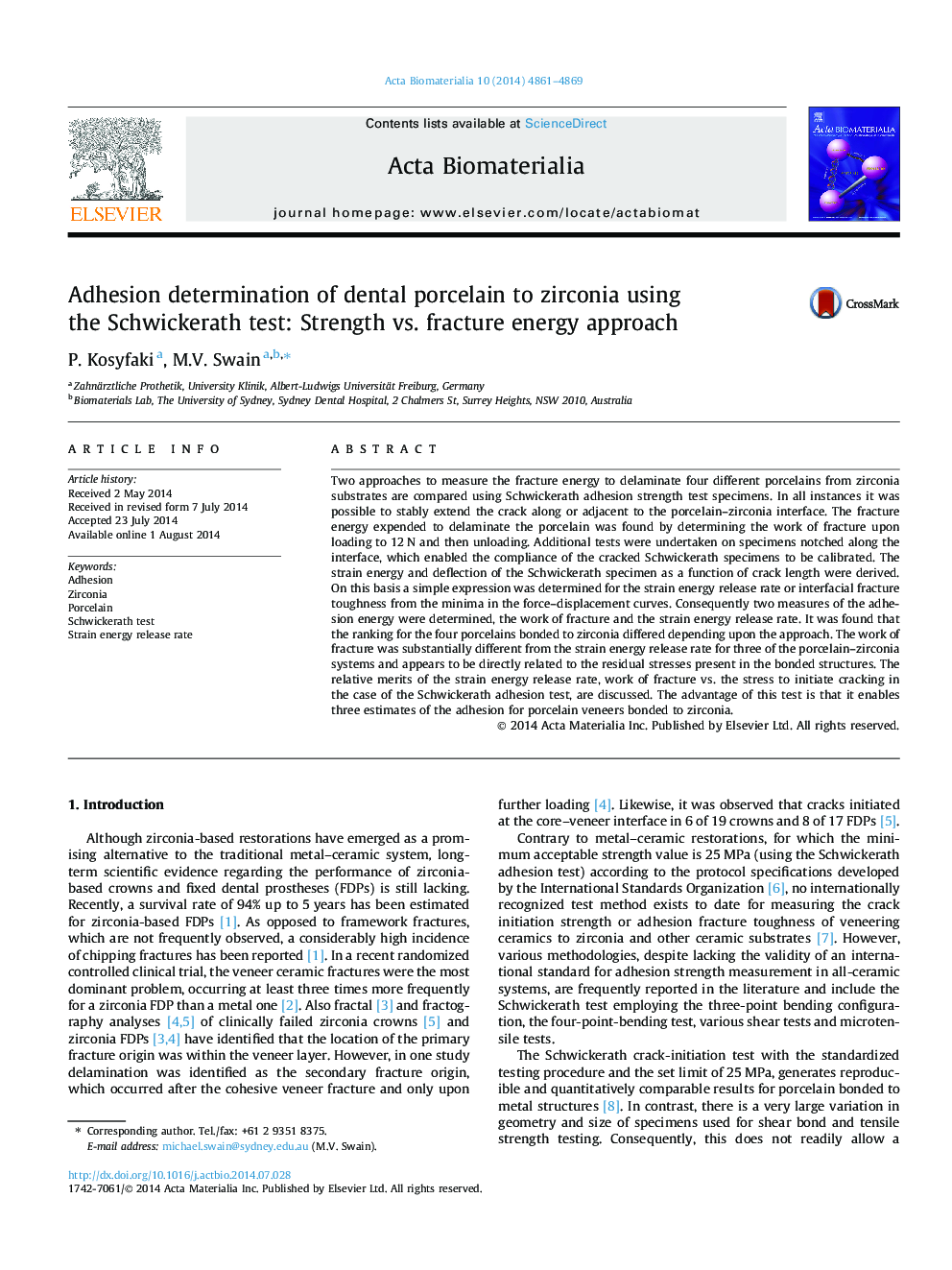| Article ID | Journal | Published Year | Pages | File Type |
|---|---|---|---|---|
| 10159067 | Acta Biomaterialia | 2014 | 9 Pages |
Abstract
Two approaches to measure the fracture energy to delaminate four different porcelains from zirconia substrates are compared using Schwickerath adhesion strength test specimens. In all instances it was possible to stably extend the crack along or adjacent to the porcelain-zirconia interface. The fracture energy expended to delaminate the porcelain was found by determining the work of fracture upon loading to 12Â N and then unloading. Additional tests were undertaken on specimens notched along the interface, which enabled the compliance of the cracked Schwickerath specimens to be calibrated. The strain energy and deflection of the Schwickerath specimen as a function of crack length were derived. On this basis a simple expression was determined for the strain energy release rate or interfacial fracture toughness from the minima in the force-displacement curves. Consequently two measures of the adhesion energy were determined, the work of fracture and the strain energy release rate. It was found that the ranking for the four porcelains bonded to zirconia differed depending upon the approach. The work of fracture was substantially different from the strain energy release rate for three of the porcelain-zirconia systems and appears to be directly related to the residual stresses present in the bonded structures. The relative merits of the strain energy release rate, work of fracture vs. the stress to initiate cracking in the case of the Schwickerath adhesion test, are discussed. The advantage of this test is that it enables three estimates of the adhesion for porcelain veneers bonded to zirconia.
Related Topics
Physical Sciences and Engineering
Chemical Engineering
Bioengineering
Authors
P. Kosyfaki, M.V. Swain,
